WiFi 7 – advantages and capabilities of the new standard
05.08.24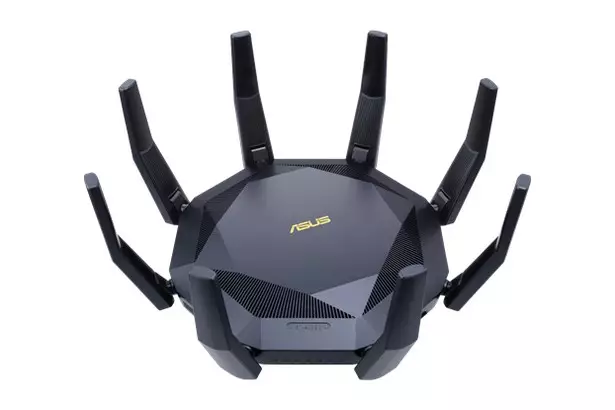
WiFi 7 (IEEE 802.11be) is the seventh generation of the 802.11 standard. It includes all the benefits of WiFi 6/6E and adds several new features, such as increased bandwidth up to 320 MHz and 4K-QAM support. In addition, the standard introduces revolutionary features such as multi-channel operation and multi-resource units (MRU). If Wi-Fi 6e was created mainly in response to the number of mobile devices, then Wi-Fi 7 intends to surprise with incredible connection speeds.
Unfortunately, to date, the Wi-Fi 7 standard is not officially registered in Ukraine, but it is worth opening up to the new opportunities it brings. For the full functioning of the new standard, devices that support it are required: laptops, PCs with new motherboards or specialized network cards, as well as routers with Wi-Fi 7 support. These additional benefits of the new standard will benefit users with different requests and needs.
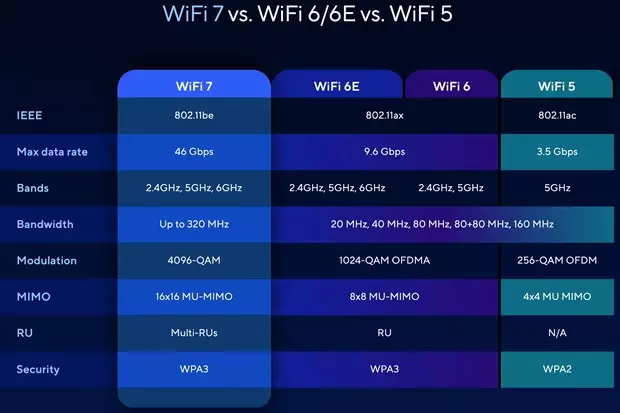
Technical features of WiFi 7 (IEEE 802.11be)
Bandwidth 320 MHz
While WiFi 6e increased the channel width in the 6 GHz band to 160 MHz, WiFi 7 offers even more possibilities, doubling the data transmission bandwidth to 320 MHz. You can think of the network as a virtual highway, and doubling the capacity as increasing the number of lanes to accommodate more vehicles.
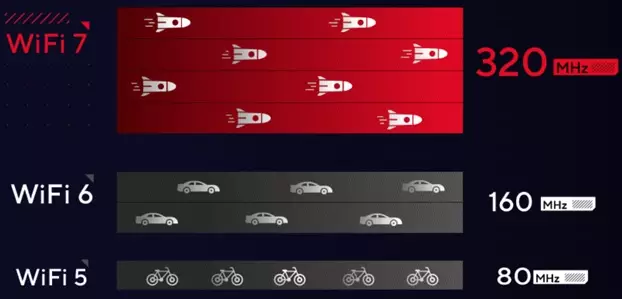
4K-QAM
With the introduction of 4K-QAM, WiFi 7 can increase the data transfer rate compared to WiFi 6/6E by 20%, because the higher level of QAM allows the signals to be packed more densely. It is as if on the highway each truck could carry more goods in the same amount of time.

Multi-channel connection (MLO)
Before WiFi 7, data transmission was limited to one band, such as 2.4 GHz or 5 GHz. The Multi-Link Operation (MLO) function allows the device to connect to multiple bands at the same time, providing higher speed by pooling bandwidth, as well as a more reliable WiFi router connection on multiple bands in use at the same time.
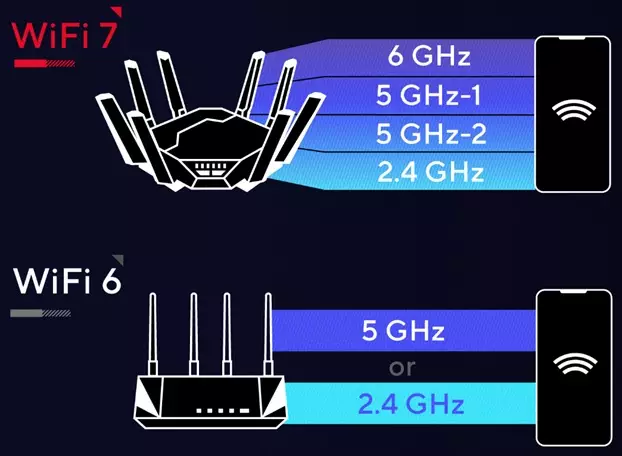
Multi resource units (MRU)
Wi-Fi 6 spectral resources can be wasted if the channel encounters signal interference. Thanks to Multi-RU, Wi-Fi 7 devices will be able to fully use other channels that are not busy or interrupted. This will allow efficient use of all WiFi bandwidth, making data transfer faster and more reliable.

16×16 MU-MIMO
MU-MIMO (Multi-User Multiple-Input Multiple-Output) technology supports simultaneous transmission and reception of data by several users. With 16×16 MU-MIMO WiFi 7 doubles the number of spatial streams compared to WiFi 6 and increases network bandwidth. This means that more WiFi devices that require more network bandwidth can work simultaneously without interruption.
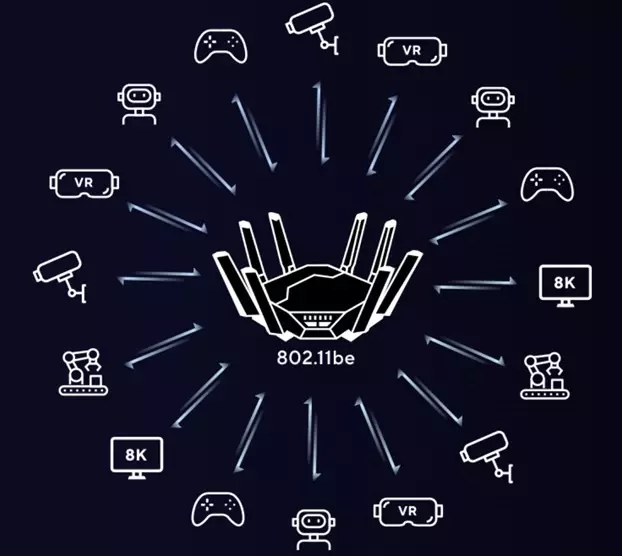
What can Wi-Fi 7 give in different areas?
In gaming, Wi-Fi 7 delivers ultra-fast Wi-Fi speeds and ultra-low latency, increasing your competitive edge in gaming, whether it’s cloud gaming, virtual reality (VR), augmented reality (AR), or mixed reality (MR).
In smart home systems, with increased bandwidth, better interference and congestion avoidance compared to previous WiFi generations, the new standard allows you to enjoy all the possibilities of a smart home, from smooth 8K video streaming to connecting more devices.
In manufacturing, millions of industrial IoT devices are revolutionizing production and distribution, and ASUS WiFi 7 devices can help these systems reach new heights.
In business, if your company is in gaming, smart homes, or smart manufacturing, such as VR content creation or industrial IoT engineering, a WiFi 7 infrastructure can prepare you to scale when this big technology comes along.
Don't miss interesting news
Subscribe to our channels and read announcements of high-tech news, tes
Oppo A6 Pro smartphone review: ambitious

Creating new mid-range smartphones is no easy task. Manufacturers have to balance performance, camera capabilities, displays, and the overall cost impact of each component. How the new Oppo A6 Pro balances these factors is discussed in our review.
Editor’s Choice 2025. Best devices of the year by hi-tech.ua

The best gaming laptops, mice for work, gaming keyboards, smartphones, and wireless headphones of 2025. Among them, we will highlight the most interesting ones and those that we can recommend buying.
Anti-rating of browsers with the “worst” privacy: ChatGPT Atlas, Google Chrome and Vivaldi are in the leaders browser rating
Frst line of the list was taken by ChatGPT Atlas, a new browser from OpenAI, which received 99 points out of 100 on the privacy risk scale.
Samsung will be main memory producer for Apple Apple business ram Samsung
Samsung became the main supplier of RAM for the iPhone 17 lineup, increasing its share to 60–70 percent, while SK Hynix and Micron shifted their focus to producing high-speed memory for AI


